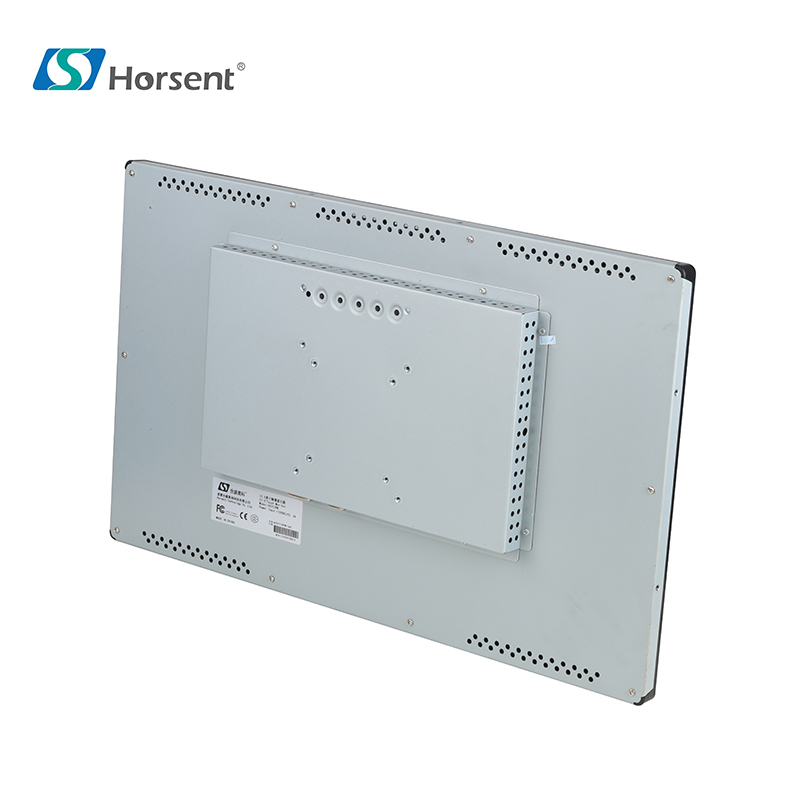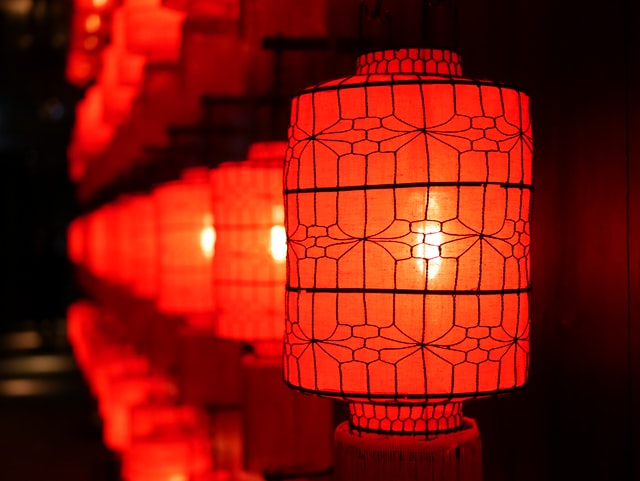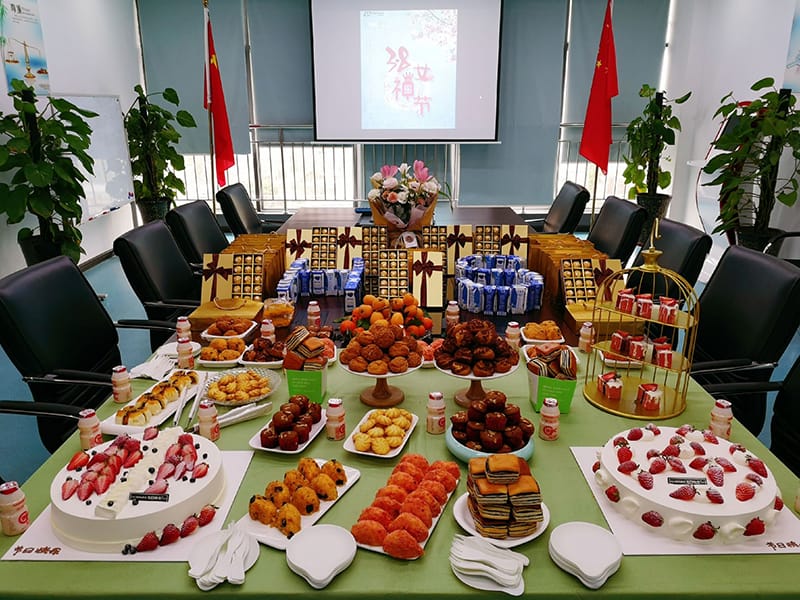In today's business world, touchscreen monitors are becoming an increasingly popular media and windows to serve and interact with customers in more forms. When it comes to setting up a touchscreen properly for your business, one frequent tricky but simple question that arises is whether to use it vertically or horizontally. In the following lines, Horsent will explore the advantages and disadvantages and guide your installation of your new touchscreens.
Put it Vertical
vertical orientation, also known as portrait mode, refers to setting up the touchscreen to be taller than it is wide. It is often preferred for displaying information that is longer than in width, such as a product catalogue, a menu, or a list of services.
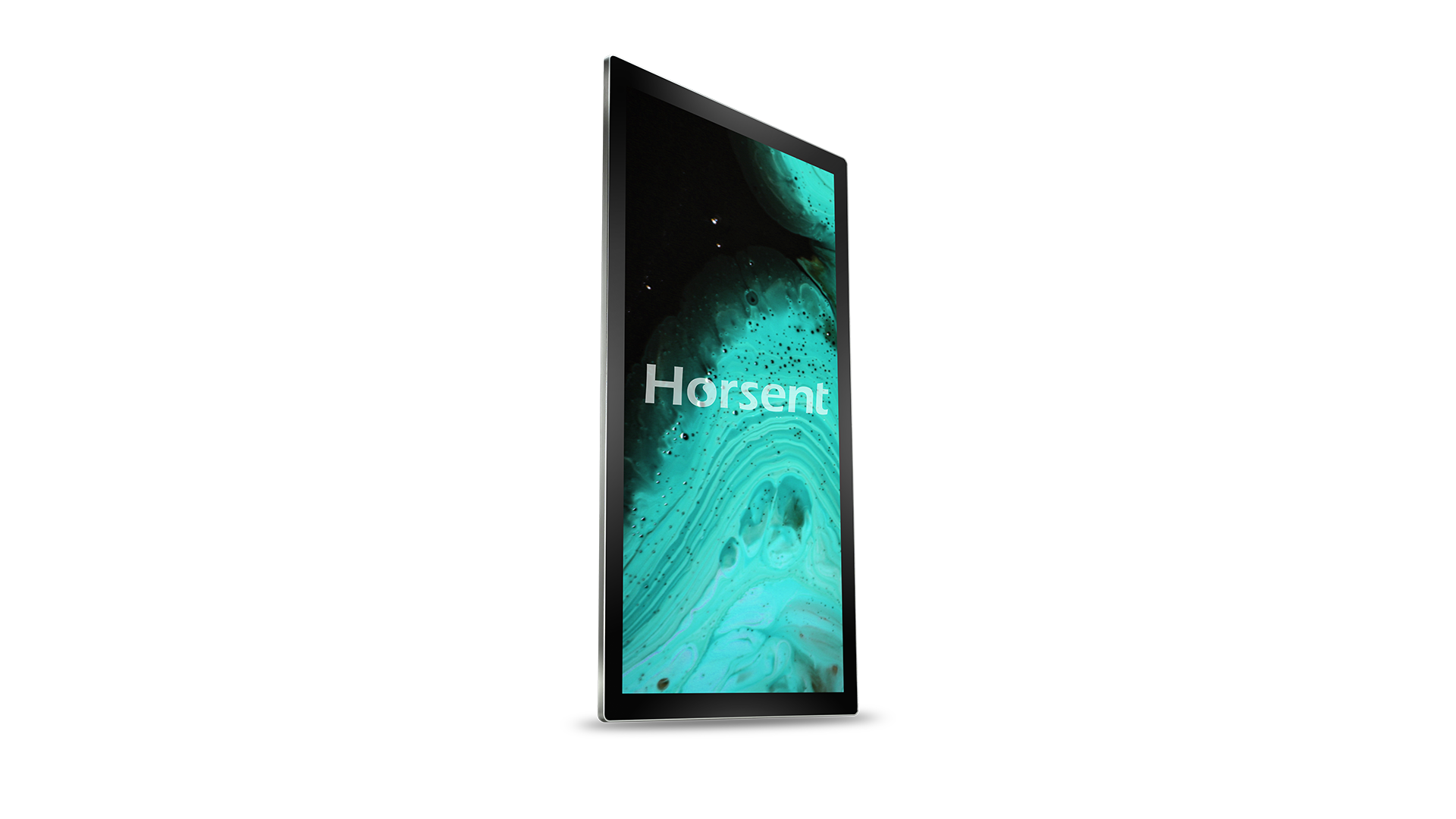
Advantages:
- For longer content to be displayed more naturally and comfortably, a Vertical setting can be beneficial for users to read through lists or descriptions, as users can easily scroll through content with a simple swipe gesture.
- Vertical touchscreens are preferred for their ergonomics. This orientation setting makes the users more comfortable and more natural for interactions, especially if they are standing in front of the touchscreen kiosk.
- Saving space when wall mounting your touchscreen and desktops, for kiosk, enables a slimmer kiosk for single-handed operation.
Disadvantages:
- A vertical orientation may be poor in displaying visual content when you have a high prospect for it, such as photos or videos or commercials. These types of content ought to deliver in a horizontal orientation, as the resource itself is captured in the ratio of 16:9 or even wider, so when displayed in a larger format and landscaping and are more visually appealing to users.
- Vertical touchscreens may not be the best choice for users to input a lot of information, such as filling out a form or entering an email address. This is simply because the virtual keyboard is often narrower in a vertical orientation, unable to hold the full 10 fingers taping operation, which makes typing more difficult.
- For smaller than 24-inch touchscreen when put vertically, it is hard for both hands or serves more users at the same time, if you are setting up for multiple users or two hands touch such as gaming or presenting, use it horizontally for 10 points, 20 points touch.
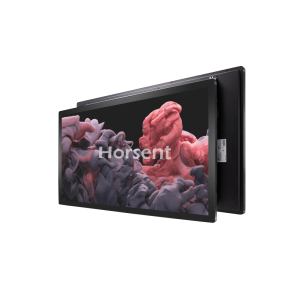
Let’s go Horizontal
A horizontal orientation, or landscape mode, is setting the touchscreen to be wider than tall. This orientation is often popular with media displaying and visual content, such as commercials, media of photos, videos, or graphics, the list can go on.
Is the landscape important to you?
For a fancy restaurant or 1st class shopping centre, where you wished to be grandest of the grand: the list of items is less important, the business desires to show the superb cuisine and delicious food. The 16:9 or 16:10 widescreen touchscreen will be the best option for your fancy items.
Advantages:
- A horizontal touchscreen monitor enables visual content display in a larger format as same as how it was taken, to be more visually appealing to users by more elements, so the media can be more impressive. Plus it helps with the input by virtual keyboard by having the almost same size as a real 26 and 1-0 keyboard.
Disadvantages:
- Compared to portrait, it shows fewer lines for display and a shorter list for longer content, making it harder or impossible to keep on a single page, such as lists or descriptions, and more difficult for users to read or interact with.
- Horizontal touchscreens may not be the most ergonomic choice for users who are standing in front of the screen, as it may require more and longer hand movement to interact.
- For wall mount, desktop touch monitor, It Takes up a larger space of wall, wide part of the desk or table and demands a wider kiosk space design to hold it up horizontally.
Which is better for You?
It depends on several factors, including the type of content to display, the placement, installation of the touchscreen, and the needs of your users. conclusively, the best choice will be the one that provides the most effective plus efficient user experience.
If your business, for instance, a restaurant needs to display longer content, such as menu and order, a vertical orientation may be the better choice. If you want to display more visual content, a horizontal orientation may be the better choice. Consider the placement of the touchscreen, such as mounted on a wall or placed on a desk, and go for the orientation that provides the most natural and comfortable interaction for your users.
I have listed the pros and cons below
|
Pros/Cons |
Horizontal Orientation |
Vertical Orientation |
|
Pros |
Larger display area |
More natural to scroll |
|
Easier for multiple users to interact |
Larger field of view for tall content |
|
|
Good for wide aspect ratio content |
Better for portrait photos and images |
|
|
Natural for landscape video content |
Easier to hold with one hand |
|
|
Cons |
Requires more desk space |
Limited display area for some content |
|
Can be awkward to hold and use |
Less natural for landscape scrolling |
|
|
harder to reach all parts of the screen |
Limited field of view for wide content |
|
|
May not fit certain use cases |
Can be less intuitive for some users |
Here comes some real and instant scenario to share with you:
-
Restaurant:, it's generally best to use the touchscreen vertically, as easier for customers to view and interact with the menu. It's also more intuitive for customers to scroll through menu options using vertical gestures. However, for order tracking or other back-of-house functions, a horizontal orientation may be more practical.
-
Retail: In a shopping environment, the specific application has the better saying to decide. Touchscreen for POS transactions is typically best to use horizontally, as this delivers a larger display of products and easier for customers to interact with the screen. A vertical one may be more practical for inventory management or other back-end functions.
-
Traffic: Touchscreens used for airports, and railway stations are typically used vertically, to display a larger display of information and make it easier for the travellers to quickly access and process.
-
Gaming and casinos: it varies on the specific game and how it's played. For games that require a wide field of view, horizontal orientation is typically the best. For games that require more precise touch input, a vertical orientation may be more practical.
-
Commercials: Touchscreen is perfect for interactive Digital signage or advertising, put it vertically for displaying large amounts of information or video content, while a vertical orientation may be more effective for displaying tall, narrow content such as product listings or social media feeds.
In conclusion, when setting up a touchscreen for your business, it's important to carefully consider the advantages and disadvantages of both. By taking into account the needs of your business and your users, you can fix the orientation that will provide the most effective and efficient user experience. If you still have doubts or concerns, The perfect and instant way to solve them is to set up an artificial touchscreen at a lower cost such as printing signage beforehand, and experience yourself as one of the users for media display or self-service functions and tap it for operations.
Last but not least, what if you want to have your cake and eat it? If you still desire to enjoy both the advantages of vertical and horizontal but refuse to tolerate the short comings, go for a large one, for instance, a 27inch, 32inch touchscreen or even 43inch touchscreen monitor(as long as not too bigger for you), which keep every benefit but skip most of the bad effect above.
What is your software/app’s best resolution?
There is still traditional software that set their resolution at 1024*768 or 1280*1024, in this regard, it is suggested to use a 5:4 or 4:3 ratio to get rid of unwanted extensions.
Horsent offers 19inch open frame and 17inch Openframe touchscreen to support your traditional application and software, for instance, ATM or factory operation interface.
***Important Remarks: if you plan to flip your touchscreen after being installed, contact your supplier of the touchscreen for tools for the touch controller, and it is not suggested to frequently flip it.
About Horsent: Horsent is one of the influential touchscreen monitor suppliers focusing on producing low-cost touchscreen and custom design touchscreen based on our low markup and base in Chengdu China.
Horsent offers a pre-flip service before the shipping, so you could enjoy the portrait version directly upon arrival.
Post time: Apr-21-2023




